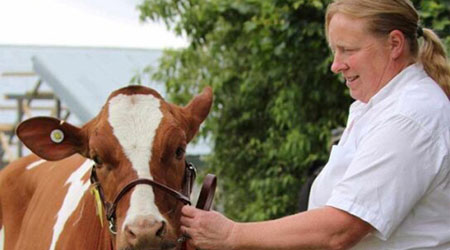A love of dairy and cows drives calf rearing for Otago raw milk business
When Steve and Shelli Mears retired from sharemilking four years ago, the one thing they couldn’t face was selling their favourite cows.
After breeding precious cow families for more than 20 years, they sat around the kitchen table and tried to come up with a plan. The family’s boutique raw milk business, Otago Fresh Milk, was born. The idea allowed them to keep their favourite pets and breed a new generation of milkers supplying homes and businesses between Oamaru and Dunedin with unadulterated farm fresh raw milk.
Steve and Shelli, daughter Katie and her partner Connor are passionate about their cows and the milk they produce on their 24-hectare farm at Palmerston in Otago. Their business model means they have no bobby calves and every calf born is reared, whether as a replacement for their herd or for sale.
“We’re not your standard operation. Every cow in our herd is known by name and most are registered pedigrees so there is always great excitement when we have new calves on the ground,” says Shelli.
Their herd of 40 Friesian, Jersey and Brown Swiss cows calve twice a year, in March and April and again in August and September. Shelli says how they rear their calves is key to their business.
“How our calves are treated is a big thing for our customers. It’s why they buy our milk,” says Shelli. “We’re hot on colostrum management and we tend to leave our calves on mum for a lot longer than more traditional dairy models.
“We rear all our calves so there are no bobby calves on our farm. The ones we don’t need go to sales, mainly for lifestyle block owners.”
The size of the Mears’ herd means they can give colostrum in the paddock after the calf is born or stand with it to make sure it gets its first proper feed off mum.
Calves stay on their mothers for up to three weeks before being brought into pens for rearing. It is here they are fed warm milk from the vat twice a day and are introduced to calf meal.
“Traditionally you might start calves on a muesli, but because we have a small number of calves we start with meal and mix it with lucerne chaff to encourage them to start eating it,” says Shelli.
The Mears are SealesWinslow customers, and they work to get calves eating up to 1kg of meal per day to ensure they are getting the coccidiostat intake they need to ward off disease.
“We have quite a different system to other dairy farming operations. All the milk we produce goes to customers or gets fed to our calves. It can be six to 12 months before our calves are fully weaned,” says Shelli.
The calves stay on meal until they are yearlings. This allows the Mears to make the most of the limited amount of grass they have on their small farm and grow the calves to their full potential.
Shelli says SealesWinslow meal helps with calves’ rumen development and building the lifelong value of their animals.
“There’s no more important time for growth than the pre-puberty period of the calf because it influences their lifetime production. It’s a vital part of growing that calf so it can reach its full potential,” says Shelli.
“We’re growing every single calf to its genetic potential. SealesWinslow pellets have the nutrients, vitamins, minerals, coccidiostats and starches they need for optimal health and for rumen development.”
Many of the Mears’ herd are also shown at A&P shows around the region. Shelli knows that if she wants her animals to win in the ring, they must be fully fed.
Her calf rearing approach also pays off at sale time. Friesian bulls are sold through the saleyards twice a year. The last calves sold were spring born, but because of their size, the auctioneer thought they were Autumn born. Shelli’s Autumn born calves were in such good condition they were sold as yearlings.
“We’re proud of how well we do with them. We’re not doing big numbers, but people want well-grown animals. The way we are rearing them and what we’re feeding them is achieving that,” says Shelli.
The Mears milk their herd in a nine-a-side single herringbone shed that they built themselves. They offer farm tours where customers can stand on one side of herringbone while the cows are milked on the other.
“We get a lot of customers coming through and family groups who want to see where their milk is coming from. We’re happy to give them a look behind the scenes!”
As a licensed raw milk supplier, the Mears’ must follow strict procedures and complete rigorous testing of their milk to ensure the safety of every batch.
Shelli says if they were supplying a larger dairy company, they would never raise calves the way they do, like leaving them on their mothers for an extended period or feeding them warm milk from the vat. However, she says many of their methods are transferrable to larger operations.
“Making sure they get colostrum in those early hours after birth is important no matter how many calves you’re rearing. Making sure they’re fully fed. Using quality calf muesli, meal, or pellets to make sure they grow to their full potential. These are all things every farmer should do,” says Shelli.
“We do it for the love of dairy and for the love of cows. We developed the business so we could keep our cows. We didn’t keep our cows so we could have a business.”


